Fifty years after Neil Armstrong stepped onto the moon, these are the stories of the only men who have followed
From born again Christians to wannabe politicians, a man who believes all earthlings are aliens and even a set of accused fraudsters, these are the stories of the sometimes astonishing moon men.
Twelve Americans walked on the moon between July 20, 1969, and December 14, 1972, still the only humans to have ever done so. Another 12 men visited the moon in the same period, orbiting at low altitude but not setting foot on the surface.
From born again Christians to a determined psychic, wannabe politicians, a man who believes all earthlings are aliens and even a set of accused fraudsters, these are the stories of the sometimes astonishing moon men.
Apollo 11
July 16-24, 1969
Crew: Commander Neil Armstrong, Lunar Module pilot Edwin Eugene “Buzz” Aldrin and Command Module pilot Michael Collins.
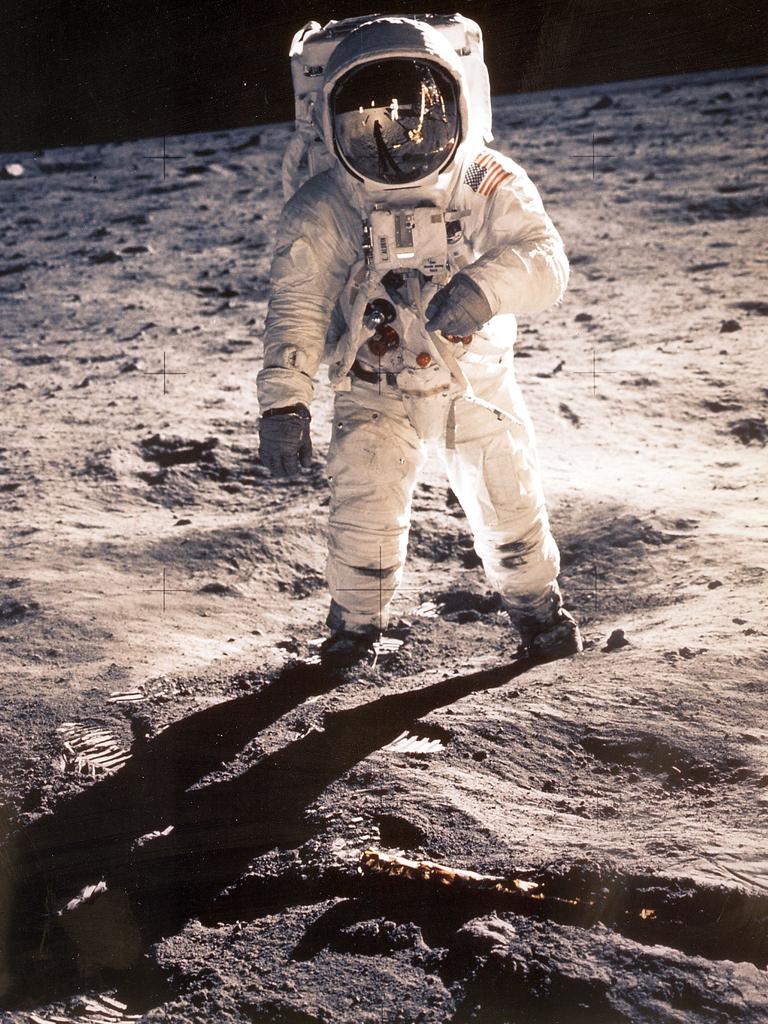
Neil Armstrong flew 78 combat missions in the Korean War and later joined NASA as a test pilot. Armstrong flew aircraft reaching speeds of more than 6000 kmh and completed more than 900 test flights.
Fifty years ago tomorrow, Neil Armstrong stepped off the lunar landing module Eagle, and became the first human to walk on the surface of the moon. Nearly 400,000 kilometres from Earth — the equivalent of 25 times the distance between Sydney and New York — Armstrong was heard by more than a billion people when he said: "That's one small step for man, one giant leap for mankind."
Armstrong, who died age 82 on August 25, 2012, was active in the Boy Scouts and one of the personal belongings he took to the moon was the World Scout Badge.
Buzz Aldrin will always be known as the second man on the moon. Space fans love that his mother, Marion’s maiden name was Moon. Buzz became his legal name in 1988 in recognition of his sister calling him “buzzer” rather than “brother” when they were kids. He was the only man to hold a religious ceremony on the moon when, as a Presbyterian elder, Aldrin took communion on the moon.
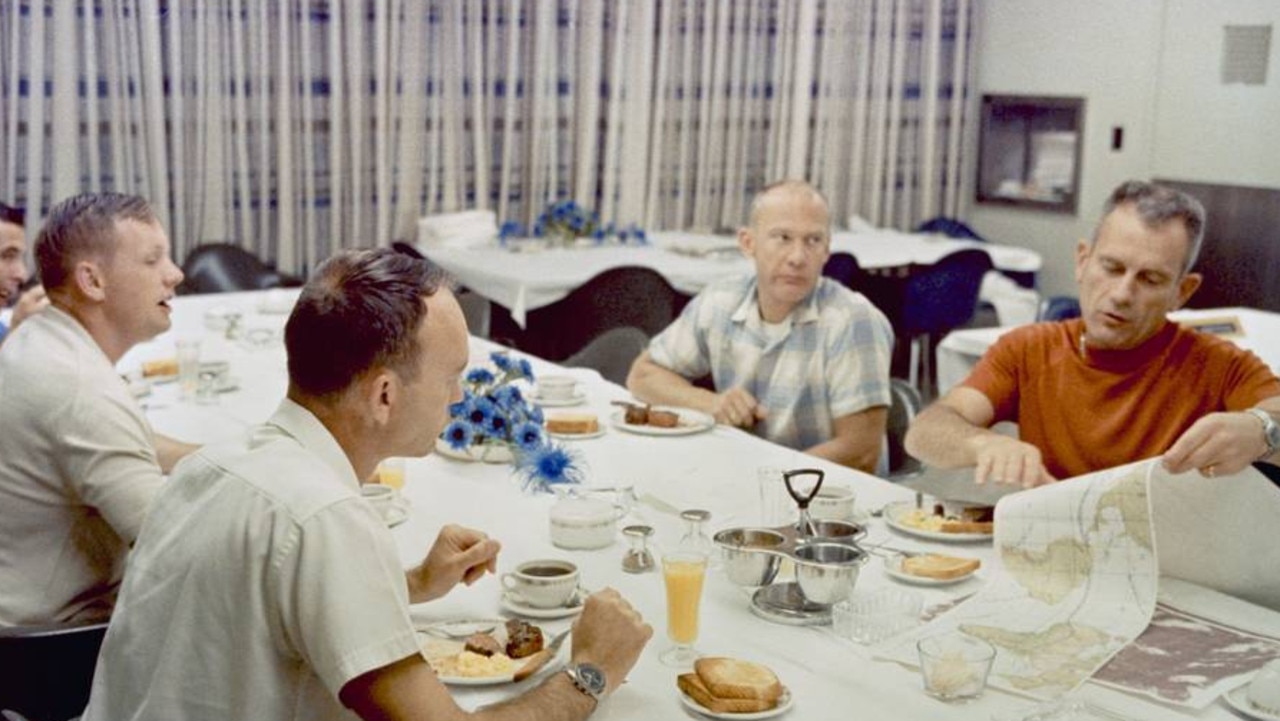
After three divorces and a facelift he blamed on the impact of g-forces in space, Aldrin lives in Florida, aged 89.
Michael Collins never walked on the moon, but he orbited it 30 times. Collins designed the famous Apollo 11 mission patch featuring an eagle carrying an olive branch landing on the moon. A father of three, Collins, 88, was married to his wife Patricia for more than 60 years.
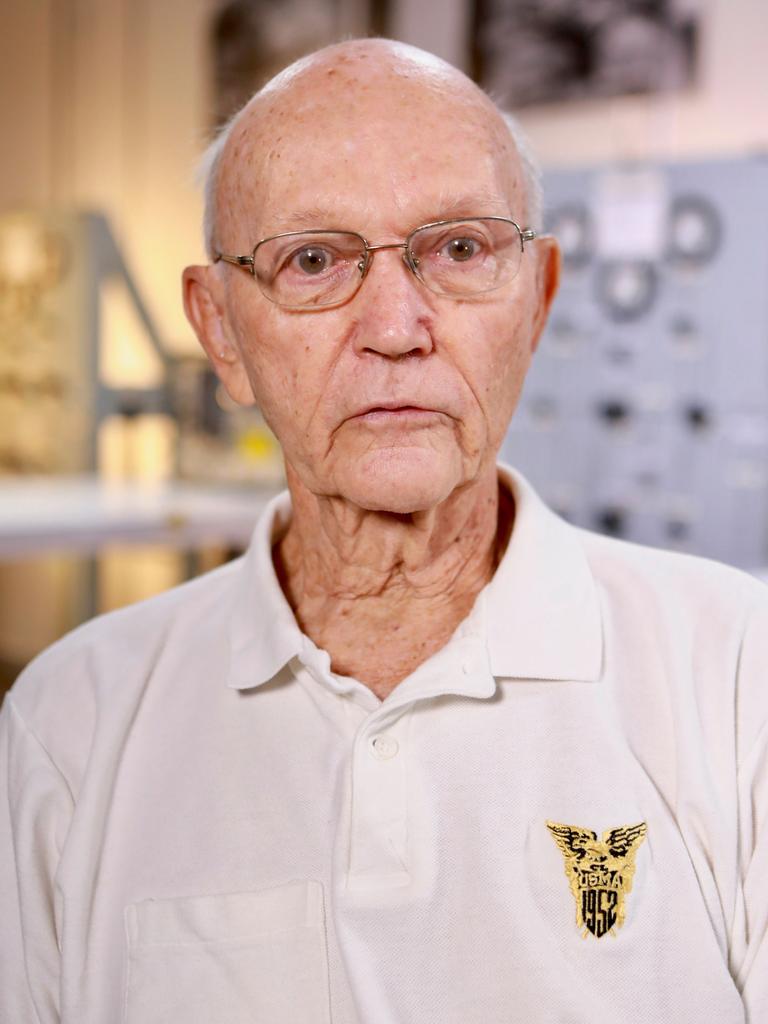

Apollo 12
November 14-24, 1969.
Crew: Commander Charles “Pete” Conrad, Lunar Module pilot Alan Bean and Command Module pilot Richard Gordon.
Alan Bean deserves special mention for a series of camera-related misadventures.
After Conrad and Bean descended to the moon with a colour TV camera, transmission was lost when Bean destroyed the camera by pointing it at the sun.
He had also smuggled a camera timer on board so he could take a selfie with Conrad on the moon but he couldn't find the timer when they got there.
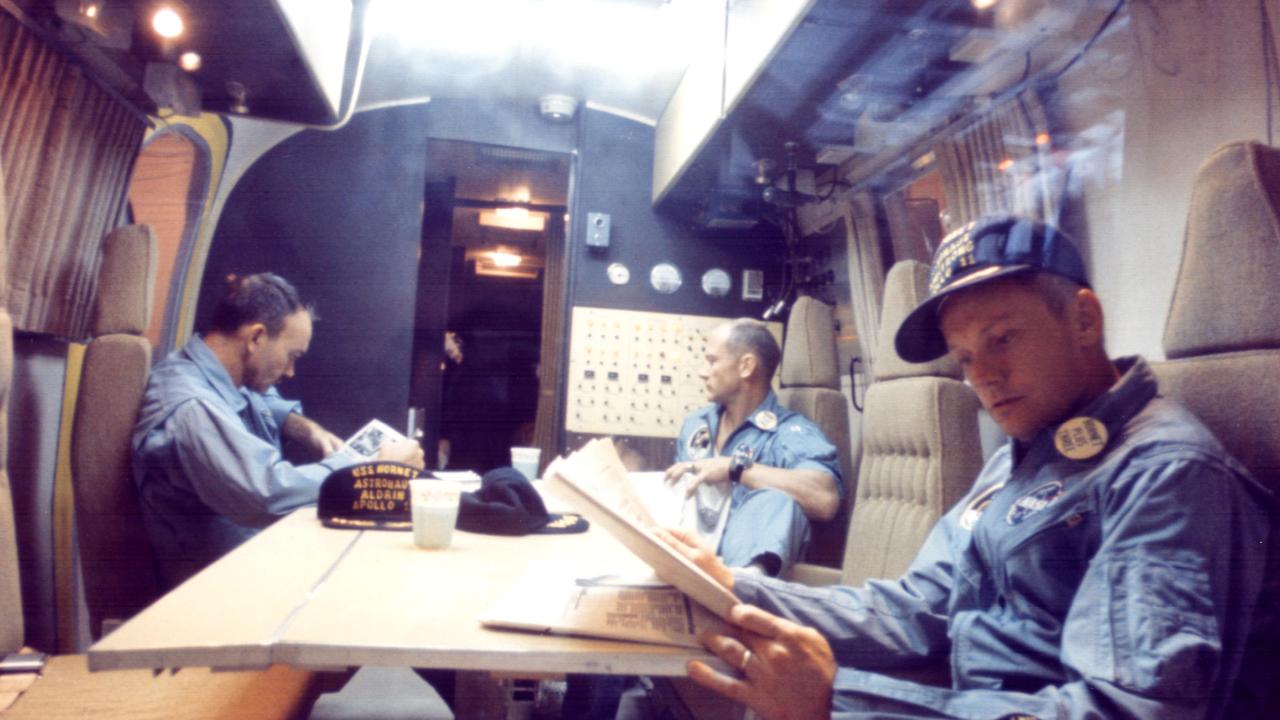
And finally, when the Command Module landed back on earth, Bean was knocked unconscious by a camera falling on his head.
Pete Conrad, meanwhile, had a $500 bet with a reporter that he could say whatever he liked when he stepped onto the moon, after denying that Neil Armstrong's first words on the moon were scripted by NASA. "Whoopee! Man, that may have been a small one for Neil, but that was a long one for me!" Conrad cried. He apparently never got the $500.
Richard F. Gordon was a genuine fly boy who won the Bendix Trophy race, a transcontinental, point-to-point race, sponsored by industrialist Vincent Bendix from Los Angeles to New York in May 1961, establishing a new speed record of 869.74 miles per hour (1400kmh) and a transcontinental speed record of 2 hours and 47 minutes.
Music inspired by the moon landing
Why the race to own the Moon is heating up
Unseen insights into Moon landing
Apollo 13
April 11-17, 1970
Crew: Commander James Lovell, Command Module Pilot John “Jack” Swigert and Lunar Module Pilot Fred Haise.
Incredibly, unlucky 13 lived up to its reputation when the lunar landing had to be called off two days after launch (on April 13) when an oxygen tank explosion left the command module severely compromised. The crew overcame limited power, loss of cabin heat, water shortage and carbon dioxide build-up to return safely to earth, using the landing module as a lifeboat which eventually landed safely in the ocean near Samoa.
Jim Lovell was also a member of Apollo 8, the first manned flight around the moon, and was the only man to have flown to the moon twice, but to have never walked on it.
Jack Swigert was the astronaut who made the dramatic announcement, "Houston, we've had a problem here". Swigert was called in late to replace Ken Mattingly, who was incorrectly diagnosed with measles. Swigert’s incredibly precise approach to life — he used to line up cans of soda alphabetically in the fridge — is credited in large part for the successful return to earth of the Apollo 13 crew.

His life after the dramatic Apollo 13 mission was marked by mixed blessings. He was implicated in the so-called Apollo 15 postal envelopes scandal — which involved hundreds of unauthorised commemorative envelopes being carried to the moon and then sold at very high prices by German stamp dealer Herman Sieger — and as a result, he was later withdrawn from a joint mission with the Soviets. Today, the so-called “Sieger covers” (envelopes) sell for more than $50,000 each.
In 1982, he won a seat in Congress but at the same time was diagnosed with a malignant tumour in his nose and died at the age of 51 before he could take his seat.
In 1973, Fred Haise crashed a World War II training plane and suffered second degree burns over 65 per cent of his body. But by 1977 he had recovered to pilot the first test flight of the Space Shuttle Enterprise.
Haise and his fellow Apollo 13 pilots have travelled further from the earth (400,171km) than any other person, as they went to the far side of the moon to begin their slingshot manoeuvre back to earth.
Apollo 14
January 31-February 9, 1971
Crew: Commander Alan Shepard, Command Module Pilot Stuart Roosa and Lunar Module Pilot Edgar Mitchell.
In 1961, Shepherd became the first American to travel into space, but he was later grounded for four years with Ménière's disease — a severe form of vertigo. Desperate to get to the moon, he successfully underwent an experimental surgical procedure and was cleared for take off.
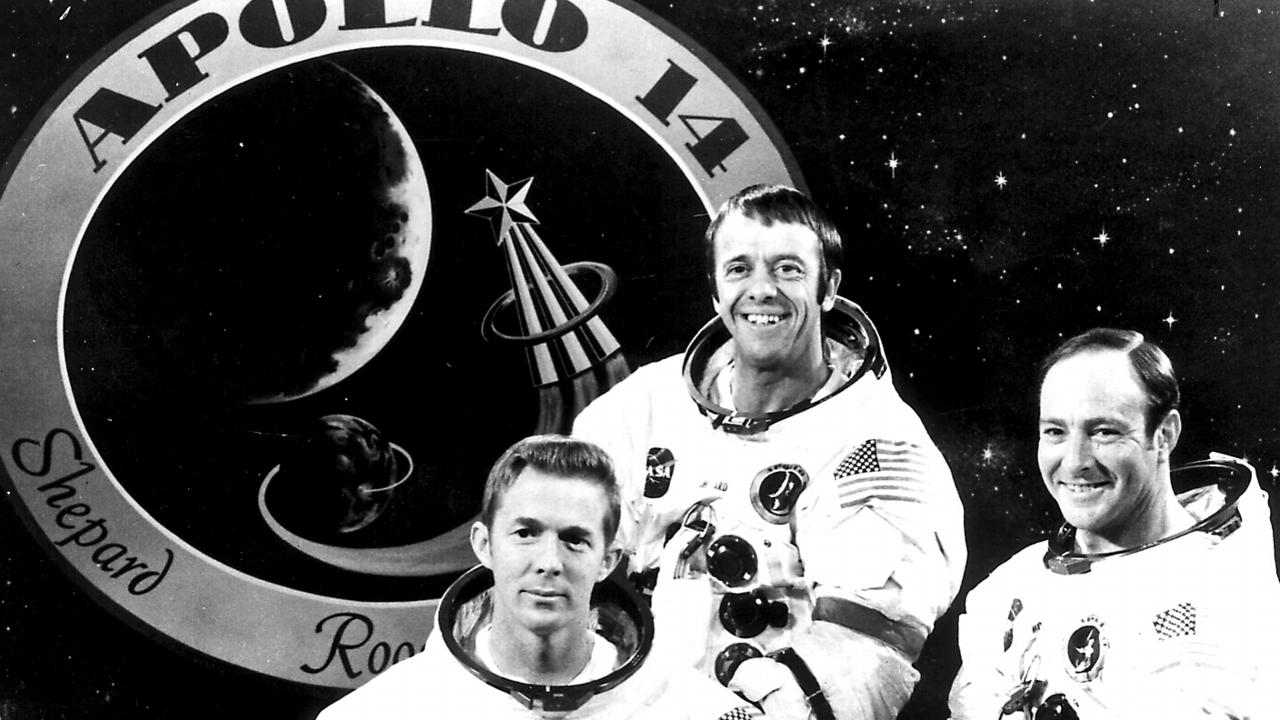

When he did finally reach the moon’s surface, he celebrated by hitting two golf balls with a makeshift club, made of a Wilson six-iron head attached to a lunar sample scoop handle.
Edgar Mitchell grew up in Roswell, Texas — which later became famous for reported UFO sightings. Mitchell spent five days in a lunar module simulator during the Apollo 13 crisis, testing out emergency procedures and radioing them into space.
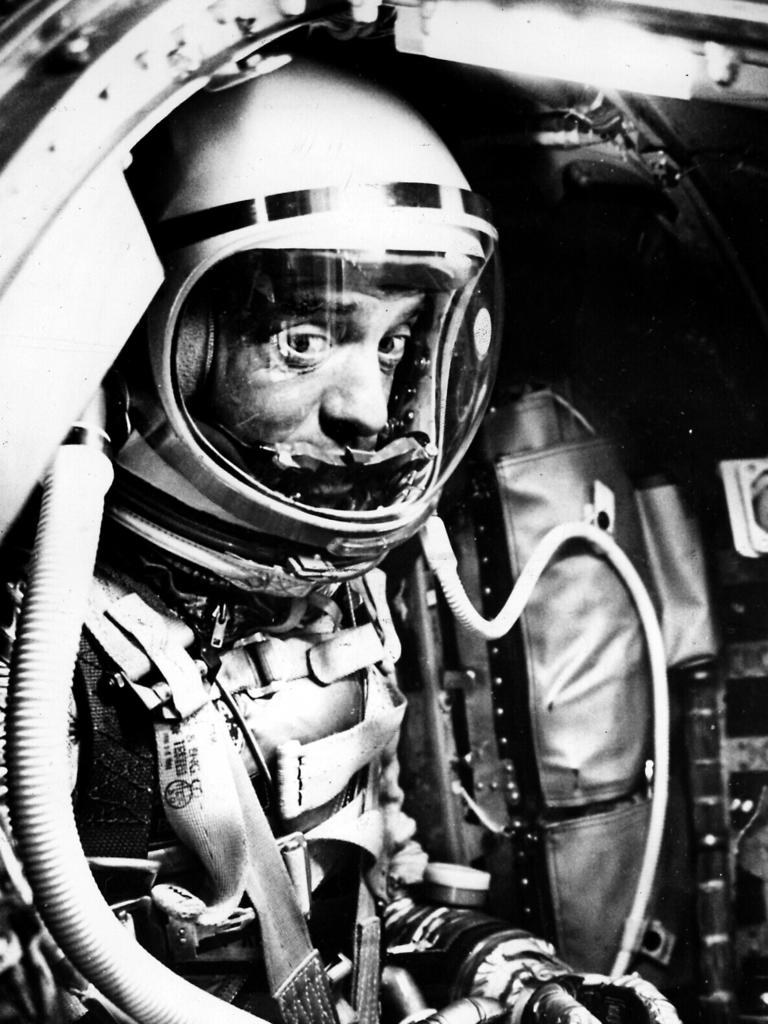
During the Apollo 14 mission, Mitchell conducted ESP experiments, trying to send his thoughts back to collaborators on earth. He later founded the Institute of Noetic Sciences to “expand knowledge of the nature and potentials of the mind and spirit”.
Command Module pilot Stuart Roosa conducted experiments with tree seeds to see what impact microgravity would have on their growth on earth. The seeds were later planted successfully around the world, with no difference to normal seeds.
Apollo 15
July 26-August 7, 1971
Crew: Commander David Scott, Lunar Module Pilot James Irwin and Command Module Pilot Alfred Worden.
The men from Apollo 15 returned with the four billion year old Genesis Rock, which is still important to science today as a remnant of the history of the universe. Apollo 15 saw the first use of the Lunar Roving Vehicle.
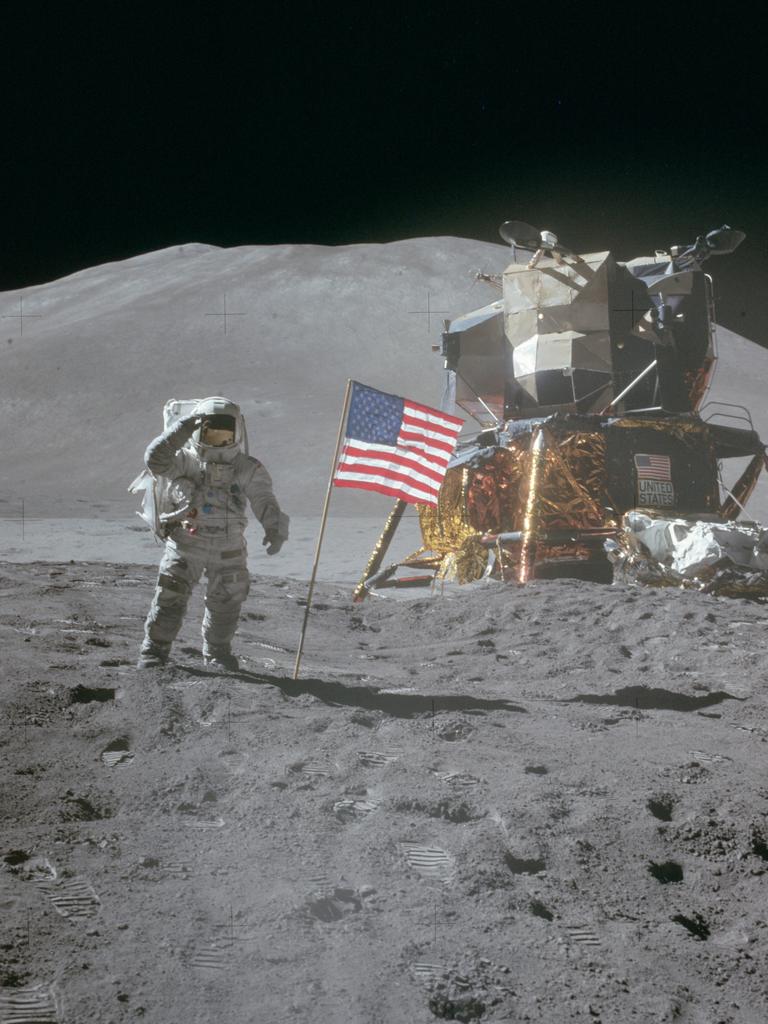
David Scott, the seventh man to walk on the moon, is the only living commander of an Apollo mission who landed on the moon, and one of four surviving moon walkers.
Scott left a memorial plaque on the moon bearing the names of the astronauts and cosmonauts who had died to advance space exploration, as well as a 9cm aluminium sculpture, Fallen Astronaut, by Paul Van Hoeydonck, a Belgian artist Scott met at a dinner party. After the memorial was disclosed, the artist said he had intended the figure to represent all humankind, not just fallen astronauts, and that it should have been left standing up, not lying down, to represent the rising of humankind. The artist wanted to sell 950 replicas of the statuette at $750 each, but finally relented under pressure from NASA. Van Hoeydonck later said about 50 replicas were made.
Jim Irwin was the eighth man to walk on the moon. He became a devout born-again Christian after returning from space and after retiring from NASA, he founded the High Flight Foundation and became a Goodwill Ambassador for the “Prince of Peace”, saying “Jesus walking on earth is more important than man walking on the moon”. He led expeditions to Turkey to search for the remains of Noah’s ark.
Al Worden said in 2017 that all human beings are actually aliens who arrived on Earth from outer space. He ran for Congress in 1982 and lost the Republican primary, and subsequently sold some of the controversial postal envelopes to pay for the cost of the campaign.
Apollo 16
April 16-27, 1972
Crew: Commander John Young, Lunar Module Pilot Charles Duke and Command Module Pilot Ken Mattingly.
John Young, the ninth man to walk on the moon, had the longest career of any astronaut and flew six space assignments during a 42-year career with NASA. Young was very critical of NASA management after the Challenger shuttle disaster in 1986 killed seven people.
Charles Duke was the 10th and youngest person to walk on the moon at the tender age of 36.
Duke left a family photo on the surface of the moon and is a committed born again Christian who has been married to wife, Dorothy, since 1963. He is 83.
Ken Mattingly spent three days, nine hours and 28 minutes by himself in the Command Module, the longest solo US space flight.
Apollo 17
December 7-19, 1972
Crew: Commander Eugene Cernan, Lunar Module Pilot Harrison Schmitt, and Command Module Pilot Ronald Evans.
Eugene Cernan was the 11th person to walk on the moon. He got back into the lunar module after Schmitt, which means he is the last man to walk on the moon so far. His went to college at Purdue University in Indiana, as did Neil Armstrong, making it the college of the first and last men to walk on the moon.
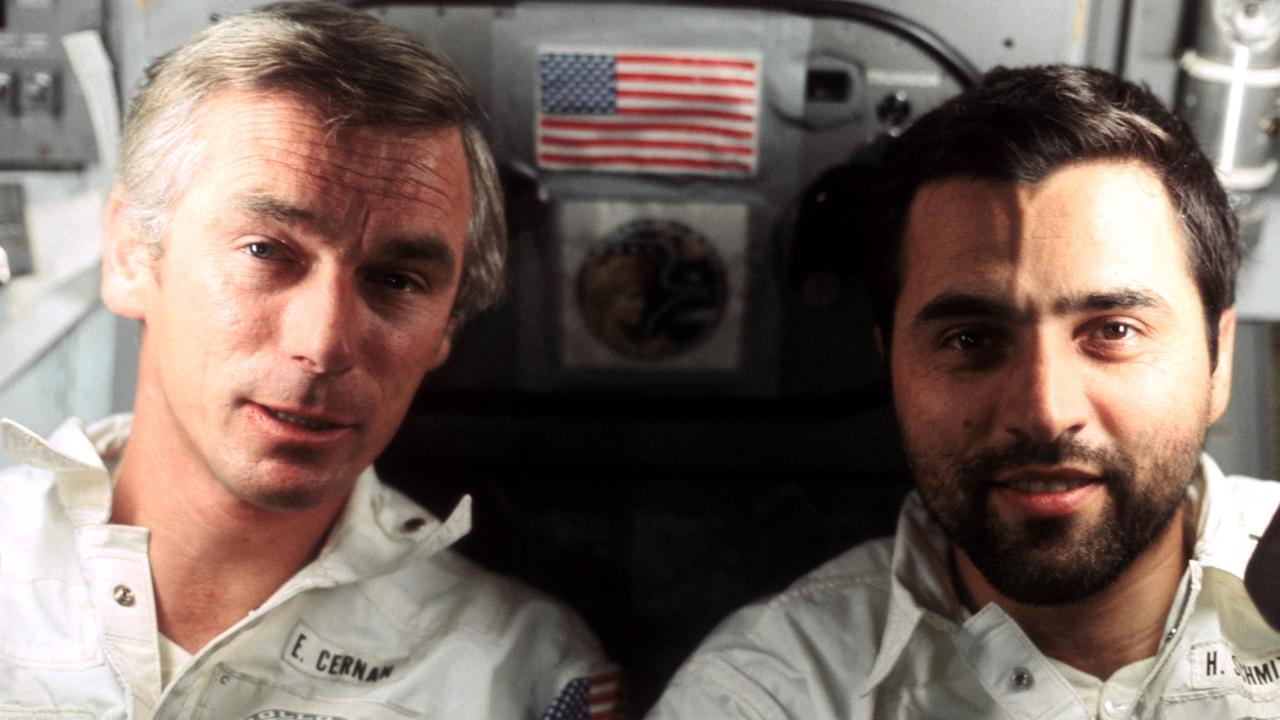
Harrison Schmitt was the first professional geologist to make the big moon trip and he collected the rock sample designated Troctolite 76535, which has been regarded as one of the most important samples returned from the Moon.
Schmitt lost a seat in the Senate to an opponent whose slogan was “What on Earth has he done for you lately?” and he describes climate change as “the global warming scare” which is a tool for people who want bigger government.
Ronald Evans orbited the moon a record 75 times.
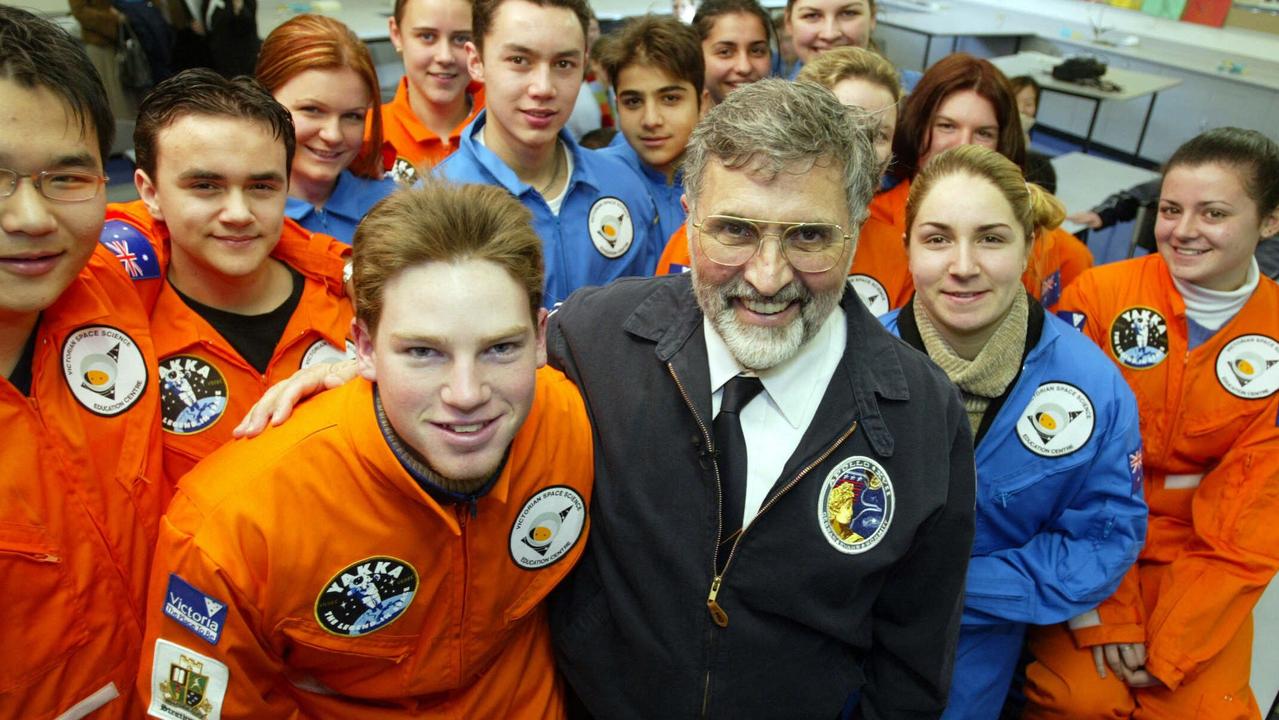
When the Apollo 17 crew landed in the Pacific Ocean, they were met by the USS Ticonderoga, which was the ship Evans had served on in the Vietnam War.
Originally published as Fifty years after Neil Armstrong stepped onto the moon, these are the stories of the only men who have followed



